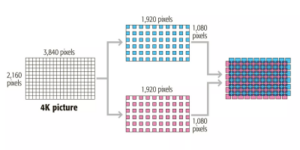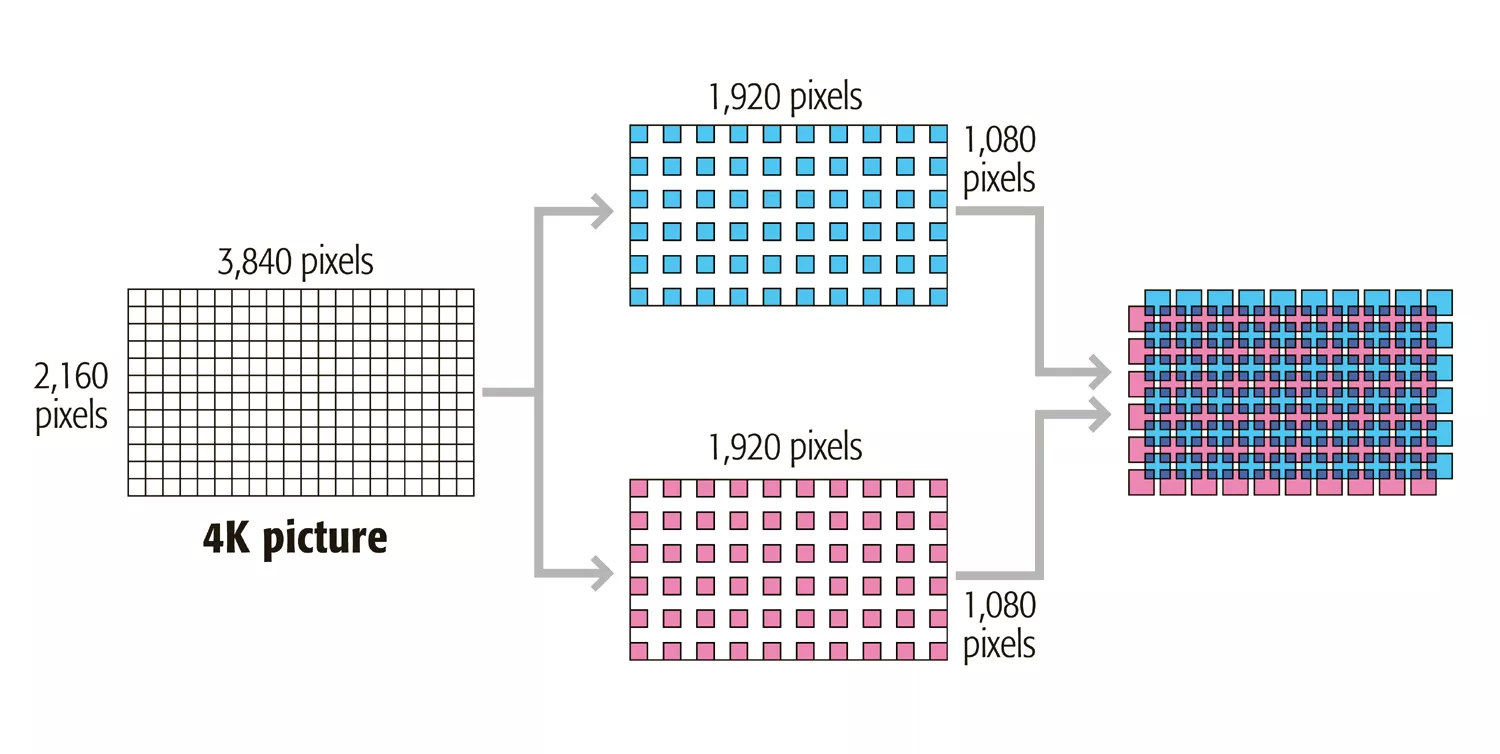A recent post on LinkedIn led me to write this DD, and it has to do with 4K video and imaging. Or, at least how marketing types have redefined it as “True” 4K or “Faux” 4K.

The post in question had to do with a projector manufacturer’s 4K offerings and how other manufacturers may not be offering a “true” 4K product by comparison, calling those other products “faux” 4K (or “faux” K to be clever). That prompted more than a few comments about what “true” 4K is in the first place.
One comment pointed out that the projector brand behind the original post doesn’t even have a “true” 4K imaging device in its projector, as it uses Texas Instruments’ .66” DMD with 2716×1528 micromirrors and requires image shifting to create an image with full 4K resolution. (Some irony in that?)
Now, I know more than a few marketing folks in the AV industry, and they work very hard and diligently to promote their company’s products. However, sometimes they step out of bounds and create more confusion, particularly with new technologies. Which, by the way, was one reason I started teaching technology classes at InfoComm and other trade shows two decades ago – as a way to counter marketing hype with facts.
What, exactly, is “true” 4K? If you use spatial resolution as your benchmark, then your imager must have at least 4000 horizontal or vertical pixels. The fact is, very few displays today have that much resolution, save for a limited number of digital cinema projectors, a handful of home theater projectors, and a small selection of reference and color grading monitors. All of which will set you back quite a few $$$.
Most displays that are lumped into the 4K category are really Ultra HD displays, having a fixed resolution of 3840 horizontal and 2160 vertical pixels. This would include every so-called 4K consumer TV, many digital signage displays, and production monitors. Are they “true” 4K? Going by spatial resolution, no.
What make things even more confusing is projection specsmanship. Sony’s original SXRD projectors had Ultra HD resolution. Although Epson has shown a prototype HTPS LCD chip with UHD resolution, they’ve never brought it to market. And the only DMD that Texas Instruments makes with 4K resolution is the 1.38” dark chip they sell into the digital cinema marketplace.
What projector manufacturers do instead to get to 4K is to use lower-resolution chips and shift the image with very fast refresh rates to effectively create 4K images. I’ve seen demos of the .66” DMD creating 4K images vs. a native UHD imager and you can see the difference between native and shifted images, particularly with fine text and detail. But it represents a low-cost way to get something approaching UHD resolution.
Panasonic also did this with their PT-RQ32U 4K DLP projector, using devices with 2550×1536 resolution and mapping quadrants to get to 5120×3200 total pixels. Presumably, they’ve retained this trick on their newer 4K models shown at InfoComm 2019.
Is that “true 4K?” Not when it comes to spatial resolution. But what if you base your claims on each finished frame of video, after all sub-fields are created? In that case, you could have an argument that your device is actually creating 4K video. Since our eyes can’t keep up with refresh rates much past 60 Hz, we’re not likely to see any flicker from this technique (also known as “wobbulation” and used by such luminaries as JVC and Hewlett-Packard on their display products in the past).
In fact, Digital Projections’ Insight Laser 8K projector employs three 1.38” dark chip DMDs and some clever image shifting to get from native 4096 x 2160 resolution to get to 8K (presumably 8192 x 4320 pixels in the finished images). Native 8K DMDs don’t exist, and like 8K camera sensors, wouldn’t come cheap if they did. Scaling down, it would make no sense financially to try and ship single-chip 4K DLP projectors with the 1.38” 4K DMD, not to mention the optical engine would have to be a lot larger, resulting in a bigger and heavier projector.
At this point, we should stop using the nomenclature “4K” altogether and switch to the more accurate CTA designation for Ultra HD (3840 x 2160) when we talk about the next generation of displays past Full HD (1920 x 1080) and 2K (2048 x 1080). Also, SMPTE designates two sets of resolutions that go beyond Full HD – UHD-1, or anything up to and including 3840 x 2160, and UHD-2, anything beyond UHD-1 up to 8K (7680 x 4320) and beyond.
From my perspective; if your imaging device can show me a complete frame of video with at least 3840 x 2160 pixels, refreshed at 60 Hz, then I’m okay with calling it UHD (NOT 4K). But there’s a catch: High frame rate video is going to be a big thing with UHD-1 and UHD-2 and will require refresh rates of 90, 100, 120 Hz, and even 240 Hz. Can your current projector show me a complete video frame with at least 3840 x 2160 pixels of spatial resolution when refreshed at 240 Hz? 120 Hz?
Boy, I can hardly wait for 8K projector marketing campaigns to start… (PP)
Analyst Comment
The resolution topic continues to be a hot one – I have an article next week on the controversy around 8K resolution in TV. Further, the original images may be created using cameras wit pixel shift (e.g. https://www.digitalrev.com/article/is-pentax-pixel-shift-technology-any-good) – and it’s not very clear what you would get after shifting at each end of the signal chain! (BR)


